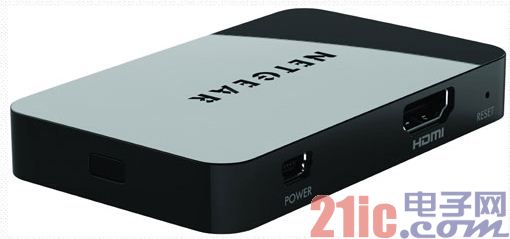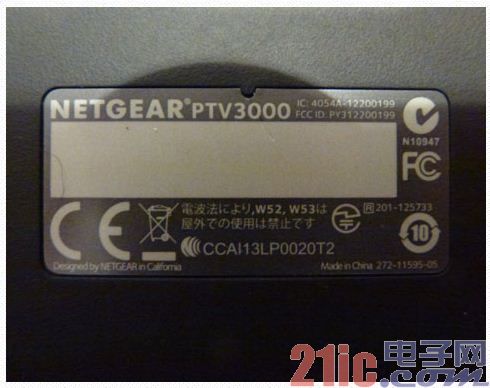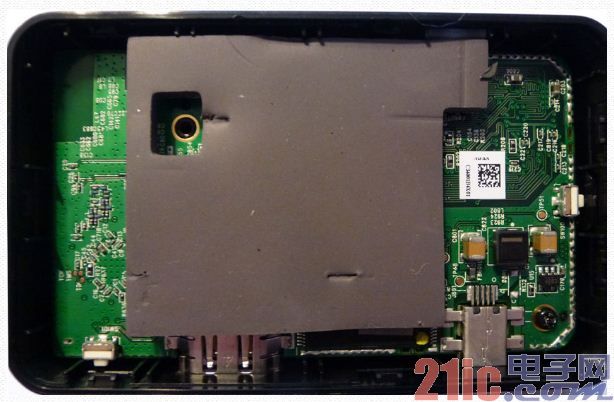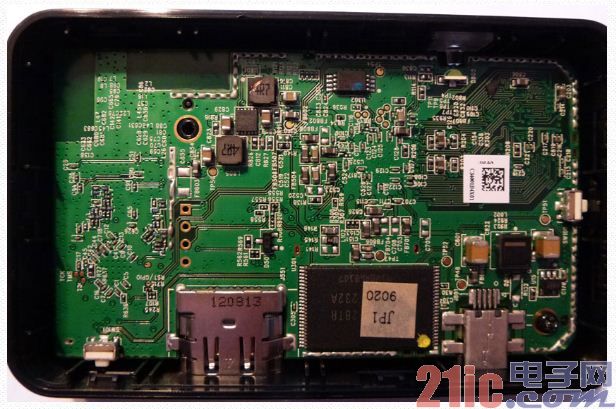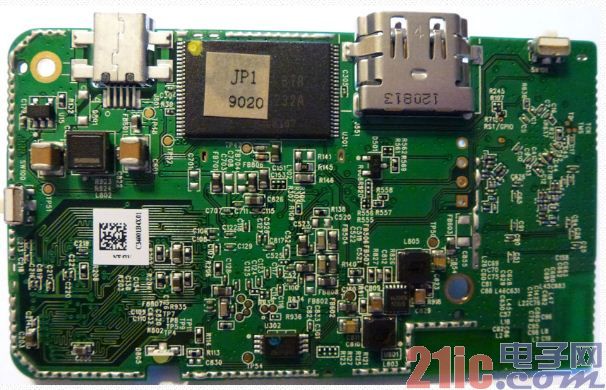I have been looking for cheap and easy to use consumer electronics to disassemble to understand its detailed structure. NETGEAR's PTV3000 Push2TV sold for $39.99 on Groupon, making it the next analytics object. This article refers to the address: http:// The PTV3000 is NETGEAR's third-generation streaming media adapter that supports the Intel WiDi protocol. The PTV1000 supports WiDi v1.0 up to 720p, while the PTV2000 and PTV3000 support the updated version of the 1080p WiDi specification. The PTV3000 is much more compact than the previous version and can be upgraded to support the Miracast protocol derived from WiDi. Figure (a): PTV3000 Streaming Media Adapter Disassembly Process. Figure (a) shows the PTV3000's rear panel microUSB (power) and HDMI connectors and embedded reset switch. The device also includes a USB cable and an AC to USB power adapter, but not shown. On the right side of the PTV3000, you can also see a Wi-Fi Protected Setup (WPS) button. In front of the device, there is also a power LED indicator, which is also not shown in the figure. In the analysis process, the first challenge I faced was how to open the plastic case of the PTV3000. At first, I tried to use a screwdriver to pry open the case from below, but it was unsuccessful. Finally I decided to peel off the product label (Fig. (b) ). Figure (b): PTV3000 Streaming Media Adapter Disassembly Process. Below the product label, I found a small Phillips head screw. After screwing this screw off, you can open the plastic case of the PTV3000. I suspect that the foam pad shown in Figure (c) should be used to enhance the air gap between the PCB and the underside of the case. It is clear that the foam pad is electrically insulating, but I don't think it is used to function as an electromagnetic interference shield (but keep this idea). After removing the foam pad, you can see one side of the PCB. Figure (c): PTV3000 Streaming Media Adapter Disassembly Process. The LED indicator is shown above the figure (d) and the WPS switch is on the right. Below the figure (d) are the reset switch, HDMI connector, microUSB power connector and another Phillips head screw from left to right. Removing the screw removes the PCB from the housing. Figure (d): PTV3000 Streaming Media Adapter Disassembly Process. Figure (e) shows the case after the PCB has been rotated 180°. The IC with the ROM code label located in the middle of the top microUSB and HDMI connectors is the Hynix H27U1G8F2BTR-BC 1Gb ​​NAND flash memory. Since the code cannot be executed directly outside of the NAND flash, I will find the RAM in the system (and, of course, the data storage). Therefore, I flipped the PCB over (Figure (f)) and found the only known device known as Texas Instruments' TPD12S521 HDMI ESD IC. I could have opened the top of the Faraday cage too, but this would cause the PTV3000 to continue to be used, and I am going to use it for other tests in the future. Fortunately, the WikiDevi website continues to provide reference information. In addition to providing us with a partial list of devices, WikiDevi also provides links to FCC-certified database pages containing photos under the metal shield. Figure (e): PTV3000 Streaming Media Adapter Disassembly Process. Figure (f): PTV3000 Streaming Media Adapter Disassembly Process. Below the smaller shield on the left is Atheros' AR9374 dual-band 802.11a/b/g/n Wi-Fi controller. The larger shield on the right contains two well-known ICs: Cavium's PureVu CNW6611L SoC and SDRAM. Photographs provided by the FCC show that the manufacturer of the memory is Hynix. However, these images are not sufficient for us to identify the product name and DRAM density information on the product packaging. Cavium's CNW6611L system block diagram clearly shows it as DDR3 memory. The PTV3000, which uses fewer chips, is highly functionally integrated. Although not conceptually novel, it is impressive. The PTV3000 is a classic low-cost, low-margin, high-capacity consumer electronics product. Given that WiDi is only available for Intel products, NETGEAR wisely offers firmware upgrades that extend the PTV3000's feature set to enable more industry-standard Miracast replacements based on Wi-Fi Direct.
[Hands-free]Automatic operated through motion captured sensor, touch-free to avoid cross infection
[No-leakage and durable]No-dripping valve and waterproof design, energy-economic 4 batteries stand for 1 year
[Adjustable dispensing]4 level of dispensing from 0.5 ML to 2ML matching multiple purposes for hands-washing, bathing, cleaning
[Suitable for almost all liquids]Large capacity with 15.2 fl oz/450 ml refill tank, suitable for lotions, shampoos, liquid soaps, sanitizers, medicinal alcohol etc
[Easy to setup]Wall-mounted or put on flat place
Widely used in bathrooms, kitchens, kindergartens, offices, schools, hospitals, airports, hotels and restaurants.
Touchless Hand Sanitizer Dispenser Alcohol Dispenser, Hands-Free Automatic Soap Dispenser, Auto Sanitizing Dispenser,touch free liquid soap dispenser,automatic soap hands free dispenser Axiswell Technology Co., Ltd , https://www.medhealthycare.com